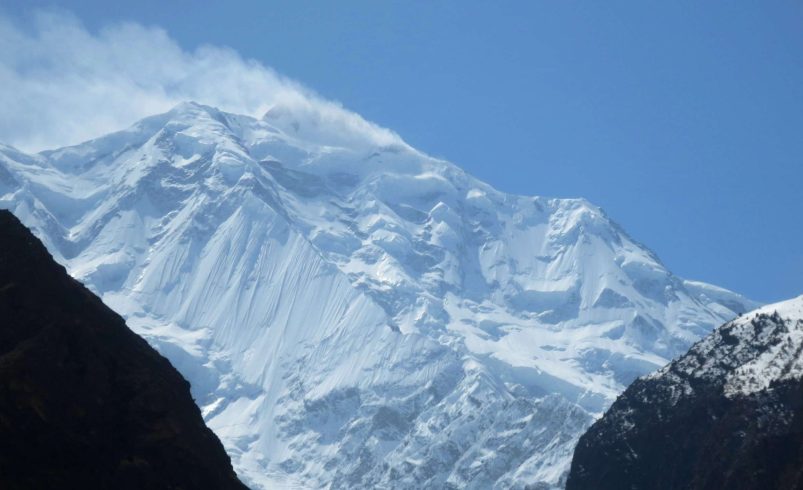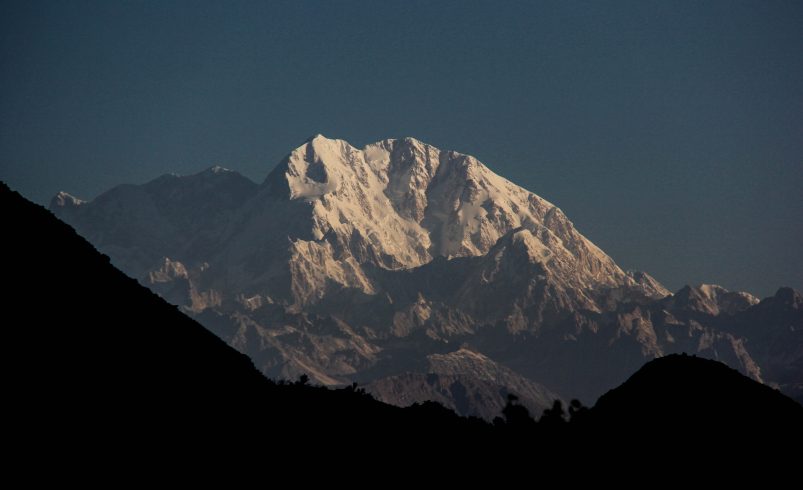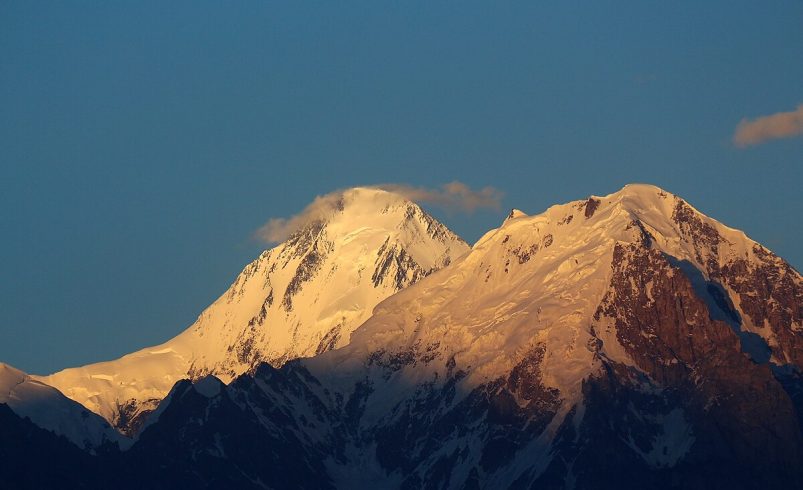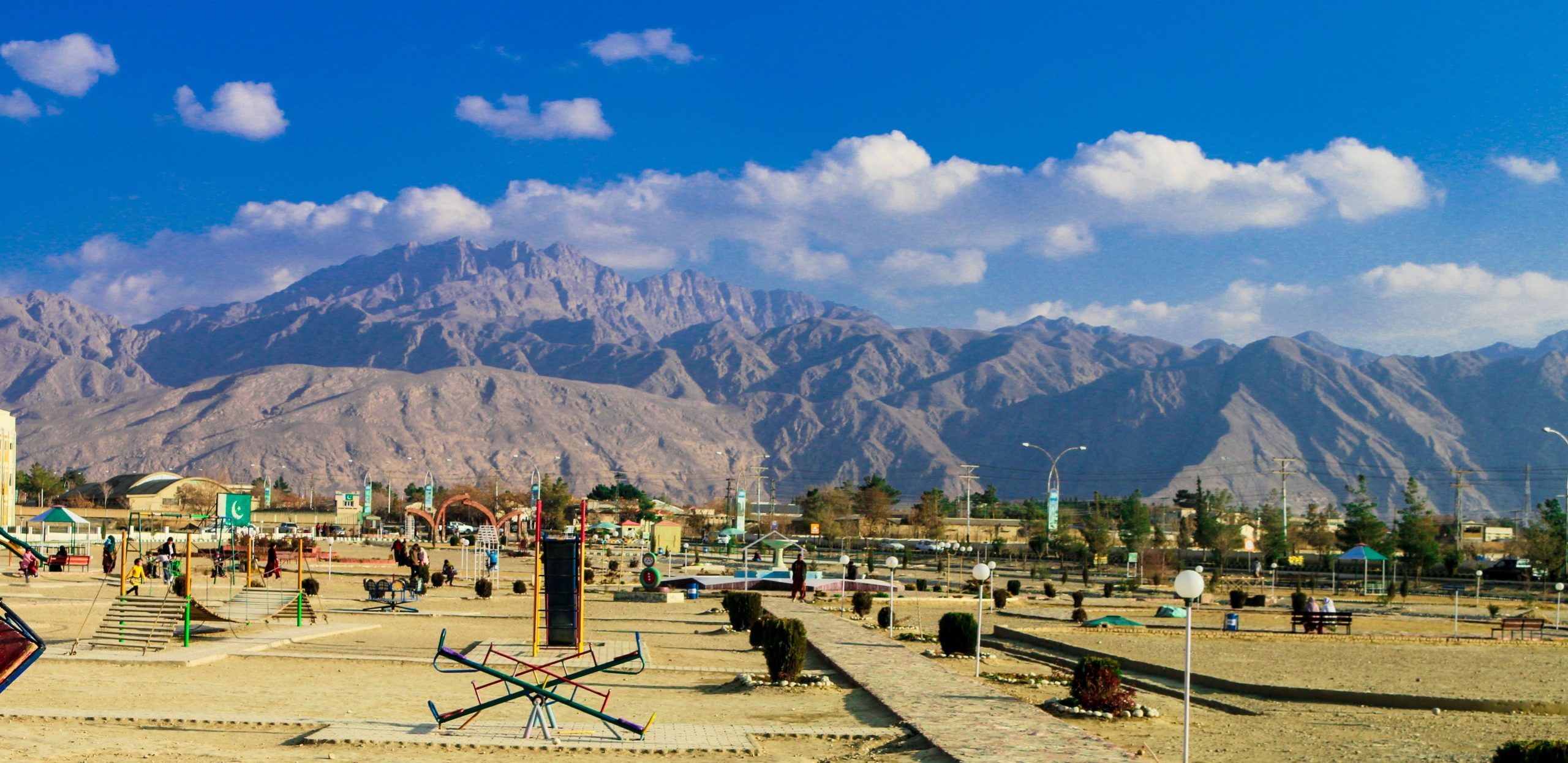
- July 27, 2025
🧗♂️ Introduction
Climbing Rakaposhi, the 27th highest mountain in the world at 7,788 meters (25,551 feet), is a true alpine dream nestled in the Nagar Valley of Gilgit-Baltistan, Pakistan. Unlike typical tourist visits, climbing Rakaposhi is a test of endurance, mountaineering skills, and adaptability in the high Karakoram. Known as the “Shining Wall” due to its dazzling white face, Rakaposhi offers a technical and challenging ascent for experienced alpinists. This guide is tailored for those who aim to conquer this formidable peak and provides comprehensive information on routes, expeditions, climbing seasons, acclimatization, gear, and more.
🏔️ History of Climbing Rakaposhi
The first successful ascent of Rakaposhi was made in 1958 by Mike Banks and Tom Patey, part of a British-Pakistani expedition team via the Southwest Ridge. Their success came after multiple failed attempts by other international expeditions in the 1930s and 1940s. Their summit marked a significant milestone in Pakistani mountaineering history, making Rakaposhi the first 7,000+ meter peak climbed in Pakistan.
Rakaposhi is considered technically challenging due to its massive vertical relief, avalanche-prone faces, and harsh weather. Its base is just 11 kilometers from the Karakoram Highway, offering one of the highest elevation gains from base to summit in the world.
🧗♂️ Famous Expeditions of Rakaposhi
Rakaposhi (7,788 meters / 25,551 feet) is the 27th highest mountain in the world and ranks among the most beautiful snow-covered peaks visible from the Karakoram Highway. Despite its beauty, Rakaposhi is notoriously challenging due to extreme vertical relief, unpredictable weather, and avalanche-prone slopes. Only a few successful expeditions have reached its summit.
🏔️ 1. First Successful Ascent – 1958 (British-Pakistani Expedition)
- Date: June 25, 1958
- Climbers: Mike Banks (UK) & Tom Patey (UK)
- Route: Southwest Ridge via Minapin Glacier
- Support: Pakistani Army & local porters
- Achievement:
- First ever ascent of Rakaposhi
- Patey & Banks reached summit but suffered severe frostbite on descent
- Considered a pioneering technical climb in Karakoram history
🇵🇱 2. Polish Expedition – 1979
- Leader: Janusz Kurczab
- Notable Climbers: Janusz Majer, Wojciech Wróż
- Route: Attempted Northwest Face
- Outcome:
- Reached high altitude but failed due to dangerous avalanche conditions
- Marked a significant alpine-style attempt on a new face
🇩🇪 3. German Expedition – 1973
- Leader: Rainer Kauschke
- Route: Southwest Spur
- Outcome:
- Reached Camp II (~6,000m)
- Turned back due to poor weather and falling ice
- Helped refine future route strategies
🧗♀️ 4. Japanese Women’s Expedition – 1984
- Significance: One of the first female international attempts
- Route: Standard Southwest Ridge
- Outcome:
- Reached high camps
- Aborted due to sudden blizzard
- Praised for resilience and organization
🇫🇷 5. French Alpine Club Expedition – 1986
- Leader: Michel Parmentier
- Route: Attempted direct line on North Face
- Significance:
- Attempted a difficult unclimbed route
- Ended due to serac falls and unstable ice fields
- Helped document potential future alpine lines
🗻 6. Canadian-Pakistani Joint Expedition – 1997
- Climbers: Canadian Alpinists + Pakistani Army
- Route: Southwest Spur
- Achievement:
- Partial summit success
- Introduced modern climbing equipment and advanced logistics
- Strengthened Canada–Pakistan mountaineering ties
🇺🇸 7. American Solo Attempt – 2004 (Steve House)
- Climber: Steve House, renowned alpine climber
- Style: Alpine Solo
- Route: Tried a fast ascent via North Spur
- Outcome:
- Reached over 6,500m
- Forced to descend due to high winds
- Became a case study in fast & light failures at high altitude
🧗 8. Pakistani National Expedition – 2008
- Organized by: Alpine Club of Pakistan
- Climbers: Veteran mountaineers including Col. Sher Khan
- Goal: National Summit with young climbers
- Outcome:
- Successful ascent by multiple members
- Strengthened Pakistan’s internal mountaineering scene
🌍 9. Recent Expeditions (2015–2023)
- Multiple attempts by:
- Russian alpinists
- Czech climbing teams
- Pakistani solo climbers like Sirbaz Khan (Rakaposhi not yet summited by him)
- Challenges faced:
- Frequent rockfalls, avalanches, route instability
- Sudden weather shifts and route disruptions
- Still limited number of confirmed summits overall
🕊️ 10. Tragedy – 2021 Rescue Operation
- Climbers: Czech climber Jakub Vlček, Pakistani climbers Imtiyaz Hussain and Akbar Sadpara
- Incident: Stranded above 6,900m after summit attempt
- Outcome:
- Imtiyaz Hussain was rescued by army helicopter
- Akbar Sadpara tragically passed during descent
- Highlighted the risks of Rakaposhi’s descent and extreme exposure
🏆 Summary of Climbing Status
- Success rate: Less than 25% of recorded summit attempts
- Most common route: Southwest Ridge from Minapin Glacier
- Climbing style: Mixed – Alpine & Siege
- Major risks: Avalanches, steep ice walls, poor descent routes, serac collapse
🧭 Main Climbing Routes to Rakaposhi
🧱 Southwest Ridge (Standard Route)
- First Ascent Route by British expedition (1958)
- Most commonly used path
- Requires technical snow climbing, rope fixing, and high-altitude endurance
- Series of high camps needed (typically three to four)
- Summit day involves navigating crevasses and cornices
🪨 Northwest Ridge
- Extremely challenging
- Very few successful ascents
- Long approach through Biro Glacier
🏞️ East Ridge (Haramosh Side)
- Rarely attempted
- High avalanche risk and steep ice walls
🏕️ Base Camp
- Located near Tagaphari
- Accessible via a moderate 1-2 day trek from Minapin village
📅 Best Time for Climbing Rakaposhi
The ideal time to climb Rakaposhi is from late May to mid-July, when the weather is relatively stable, and snow conditions are more favorable. The post-monsoon season (late September) may also offer windows, but risks of avalanches increase.
🚙 How to Reach Rakaposhi Base Camp from Islamabad
| Segment | Distance | Mode | Duration |
|---|---|---|---|
| Islamabad → Gilgit | 500 km | By air or road | 1 hour (air), 13-15 hours (road) |
| Gilgit → Minapin | 75 km | Jeep/car | 2 hours |
| Minapin → Tagaphari BC | ~12 km | Trekking | 1-2 days |
- The route to Minapin Village is scenic via the Karakoram Highway.
- Trekkers often stay in Minapin overnight before starting the trek to base camp.
🧗♀️ Acclimatization and High-Altitude Camps
Proper acclimatization is crucial for any Rakaposhi expedition. Expeditions follow a climb high, sleep low strategy. Here’s a sample camp setup:
- Base Camp (3,500 m): Trekking endpoint
- Camp I (4,800 m): First technical snow section
- Camp II (5,800 m): Crevasse zone
- Camp III (6,500 m): Summit push camp
- Summit (7,788 m): Demanding final ascent with steep icy sections
🛠️ Technical Requirements and Gear Checklist
- Crampons, ice axe, carabiners, harnesses
- Fixed ropes for dangerous slopes
- High-altitude tent, sleeping bags (-30°C)
- Supplemental oxygen (optional but recommended for safety)
- Satellite phone & GPS unit
- Avalanche beacon and snow shovel
- First-aid kit & Diamox for altitude sickness
Rakaposhi is not a beginner’s climb. Climbers must be well-versed in alpine techniques including crevasse rescue, snow anchor systems, and self-arrest maneuvers.
📜 Permits and Local Regulations
- Climbing Permit: Issued by Gilgit-Baltistan Council, apply at least 6 weeks in advance
- Liaison Officer: Mandatory to accompany expeditions
- Environment Fee: Applied for all major peaks above 6,500 m
- Porters & Guides: Must be hired from local agency (registered)
🧑🤝🧑 Hiring Support Teams
You’ll need to hire:
- High-altitude porters
- Cook & kitchen staff
- Experienced climbing guide
- Many climbers also join commercial expeditions run by Pakistani and international adventure companies
🏨 Where to Stay Before and After Expedition
- Islamabad: Serena Hotel, Hotel Margala (preparation)
- Gilgit: Serena Gilgit, Rakaposhi View Hotel
- Minapin Village: Diran Guest House, Osho Thang Guest House
These accommodations offer pre- and post-climb recovery and storage.
🍛 Food During Climb
During the climb, you’ll rely on high-energy, lightweight food:
- Freeze-dried meals
- Protein bars, nuts, and dried fruits
- Noodles, oats, tea, coffee
- Base camp meals include local dishes like daal chawal, roti, and yak meat stew
💸 Estimated Costs in PKR
| Expense | Cost (PKR) |
| Climbing Permit | 300,000–400,000 |
| Liaison Officer & Admin Fee | 150,000 |
| Porters & Guides | 250,000–400,000 |
| Gear & Rentals | 150,000–250,000 |
| Food & Accommodation | 100,000–200,000 |
| Transport | 80,000–150,000 |
| Total (approx) | 1,000,000+ |
Note: Costs vary based on team size, service level, and support.
🗓️ Suggested Day-Wise Itinerary for Rakaposhi Expedition
📍 Day 1: Arrival in Islamabad
- Arrive at Islamabad International Airport
- Transfer to hotel, gear check, and expedition briefing
- Overnight stay in Islamabad
🚐 Day 2: Drive from Islamabad to Gilgit (approx. 520 km / 12–14 hours)
- Early morning departure via the Karakoram Highway
- Scenic journey through Mansehra, Besham, Chilas
- Overnight stay in Gilgit
🚙 Day 3: Drive to Minapin Village (approx. 75 km / 2.5 hours)
- Light breakfast and short drive to Minapin in Nagar Valley
- Meet porters, finalize supplies, rest and explore village
- Overnight stay in Minapin
🥾 Day 4: Trek from Minapin to Hapakun Camp (approx. 3–4 hours)
- Start of the expedition trail
- Moderate uphill trek through pine forest
- Altitude: ~2,800 meters
- Camp setup at Hapakun
- Overnight in tents
🏕️ Day 5: Trek to Rakaposhi Base Camp (Taghafari – 3,500m)
- 3–4 hour trek to Taghafari
- Stunning views of Rakaposhi’s North Face
- Camp setup and overnight stay
🧗♂️ Day 6: Acclimatization Day at Base Camp
- Light trek/climb to higher altitude and return
- Finalize climbing gear and rations
- Briefing with expedition lead
- Overnight at Base Camp
🧗 Day 7: Ferry Load to Camp I (~4,800m) and Return
- Climbers ascend to Camp I with gear and supplies
- Leave loads, descend back for recovery
- Overnight at Base Camp
⛺ Day 8: Move to Camp I
- Full shift to Camp I
- Setup of advanced camp
- Overnight at Camp I
🏞️ Day 9: Rest and Acclimatization at Camp I
- Hydration, light movement, rest day for high-altitude adjustment
- Final gear check for upper route
🧗 Day 10: Ferry Load to Camp II (~6,000m) and Return
- Crampons, ropes required for glacier and steep snow
- Leave supplies and return to Camp I
- Overnight at Camp I
⛺ Day 11: Move to Camp II
- Full load move to Camp II
- Camp setup in snow field zone
- Altitude adaptation becomes critical
- Overnight at Camp II
🧗♂️ Day 12: Rest Day at Camp II
- Recovery and weather monitoring
- Final briefing for summit push
🏔️ Day 13: Summit Attempt (7,788m) and Return to Camp II
- Start before midnight
- Use headlamps, fixed ropes, and safety roping
- Steep snow climb; 12–16 hour round trip
- Reach the summit of Rakaposhi
- Photos, flags, and descent to Camp II
- Overnight at Camp II
🧗 Day 14: Descend to Camp I
- Controlled descent via the same route
- Equipment collection
- Overnight at Camp I
🥾 Day 15: Descend to Base Camp
- Long descent from Camp I to Base Camp
- Celebration and team regroup
- Overnight at Base Camp
🚶♂️ Day 16: Trek Back to Minapin
- Easy trek down through Hapakun
- Return to village and reunite with support staff
- Overnight in Minapin
🚙 Day 17: Drive to Gilgit
- Return journey via same route
- Check into hotel, local sightseeing if time permits
- Overnight stay in Gilgit
🚐 Day 18: Drive Back to Islamabad
- Overnight stay in Islamabad
- Optional: domestic flight if weather allows
- Long drive on Karakoram Highway if not flying
🧭 Notes for Climbers
- Days can vary depending on weather, team fitness, and permit processing
- It is recommended to add buffer days for summit success
- Always carry proper insurance, rescue coordination, and satellite communication
🧳 Packing Checklist
- Technical climbing gear
- Cold-weather clothing
- Solar charger & headlamp
- GPS/compass
- Climbing permits/documents
- Energy snacks and water purification tablets
- Personal medication and first-aid
🚨 Emergency Contacts
- Rescue 1122 Gilgit-Baltistan: +92-5811-920233
- Pakistan Alpine Club: +92-51-9208963
- District HQ Hospital Gilgit: +92-5811-920124
- Tourism Department Gilgit: +92-5811-920200
🧠 Climbing Tips for Rakaposhi
- Always hire certified guides and porters
- Acclimatize slowly and drink plenty of fluids
- Respect weather forecasts – sudden storms are common
- Pack extra fuel, gloves, and base layers
- Ensure your insurance covers high-altitude rescue
❓ FAQs
🔹 What is the best time for Climbing Rakaposhi?
The best time for Climbing Rakaposhi is between late May and mid-July, when the snow is stable and the weather allows safe summit pushes.
🔹 Is Climbing Rakaposhi suitable for beginners?
No, Rakaposhi requires advanced alpine mountaineering experience. Beginners are advised to first climb lower 6,000-meter peaks.
🔹 Do I need a permit for Climbing Rakaposhi?
Yes, all climbers need an official permit from Gilgit-Baltistan Council and must be accompanied by a liaison officer.
🔹 How many days does a typical Rakaposhi climb take?
A full expedition takes around 25 to 28 days, including travel, acclimatization, load ferry, summit day, and descent.
🔹 Are there commercial expeditions available?
Yes, multiple local and international agencies offer Rakaposhi expedition packages that include gear, permits, porters, and guides.
🔚 Conclusion
Climbing Rakaposhi is not just a mountain challenge—it’s a soul-stirring experience that blends raw alpine adventure, rich local culture, and breathtaking scenery. From the rigorous approach to the final summit push, every step on Rakaposhi is earned. For those seeking a high-altitude adventure with one of the world’s most prominent vertical reliefs, Rakaposhi offers a rewarding yet demanding climb that will leave a lasting legacy in your mountaineering journey.






